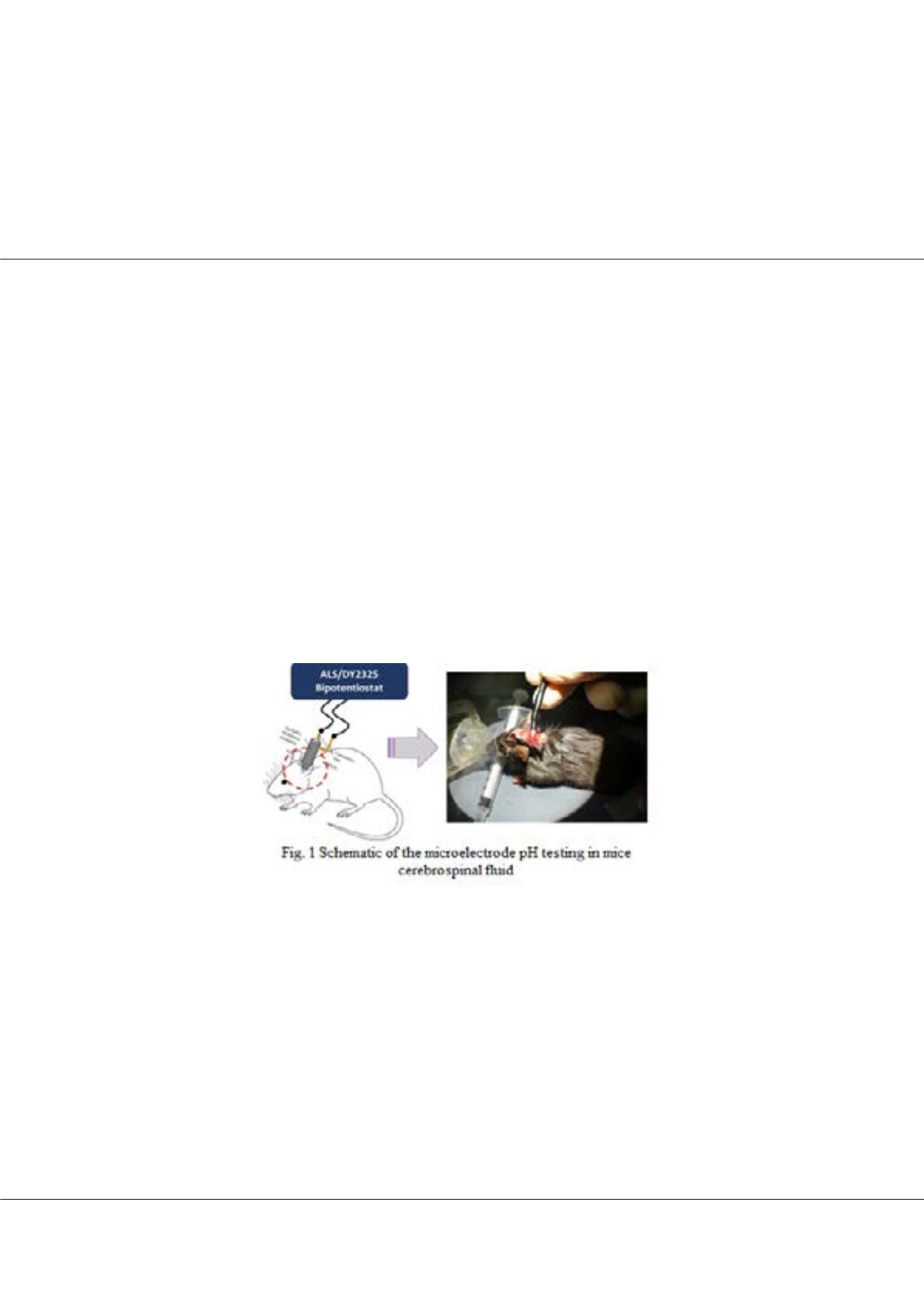

Page 38
conferenceseries
.com
RRJOMS | Volume 5 | Issue 4 | July, 2017
July 27-29, 2017 Vancouver, Canada
10
th
International Conference on
Emerging Materials and Nanotechnology
Notes:
Microneedle bio-sensor: Direct, label-free, real time detection of pH in biological cells
Ganesh Kumar Mani
Tokai University, Kanagawa, Japan
A
cid–base homeostasis and pH regulation inside the body is precisely controlled by kidney, lungs and buffer systems, because even
a minor change from the normal value could severely affect many organs. Blood and urine pH tests are common in day-to-day
clinical trials without much effort. Still, there is great demand for
in-vivo
pH testing to understand more about body metabolism and
to provide effective treatments during diagnosis. The detection of pH at the single-cell level is hoping for the great level of clinical
importance for the early detection of many diseases like cancer, diabetes, etc. In this research work, we have fabricated a micro
region pH sensor by series of processes like electrolytic polishing to create needle structure, deposition of electrode materials using
RF magnetron sputtering for pH measurements and finally testing in various biological mediums. Working and reference electrodes
were Ag/AgIO
3
and Sb/Sb
2
O
3
deposited on microneedles under optimized deposition parameters. The structural, elemental and
morphological properties were analyzed using XRD, XPS, EDS and FE-SEM. The fabricated tip of the microneedle probe is around 5
µM analyzed by FE-SEM which size is comparable with the biological cells. pH testing initially began with using fish egg and various
biological cells. The obtained pH sensing results were adequate with theoretical values. Since the sensor works at micro region, the
potential difference is easily disturbed by atmospheric anomalies. Hence, many steps have been taken to improve the stability of the
sensor. Besides that, fabricated microneedle sensor ability is proved through
in-vivo
testing in mice cerebrospinal fluid (CSF) and
bladder. The pH sensor reported here is totally reversible and results were reproducible after several routine tests.
Biography
Ganesh Kumar Mani is a Researcher at Micro/Nano Technology Center, Tokai University, Japan. He has completed his PhD in Nano-Sensors Lab at Centre for
Nanotechnology & Advanced Biomaterials (CeNTAB), Sastra University, Thanjavur, India. He published over 40 research papers in reputed international journals
with the cumulative impact factor over 70 with a few papers under review. He is also one of the inventors in two patents titled “Low Concentration Ammonia Vapour
Sensor” and “Acetaldehyde Sensor Using ZnO Nanoplatelets”. He has also delivered several keynote lectures, organized national and international conferences
in various countries. His current research interests are fabrication and development of nanostructured (Nanospheres, Nanorods, Nanowires, Nanoplatelets,
Nanosheets) thin film based gas/chemical sensors for predicting food quality, developing microfluidics based solid state pH/temperature/bio-sensors for biomedical
applications and developing painless microneedles for healthcare applications, etc.
ganesh@tsc.u-tokai.ac.jp ganeshkumarmani@hotmail.comGanesh Kumar Mani, Res. Rev. J Mat. Sci. 2017
DOI: 10.4172/2321-6212-C1-002
















